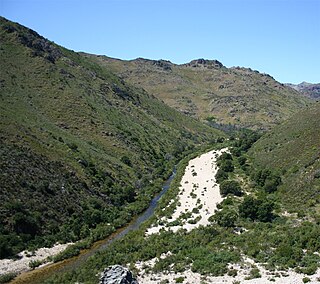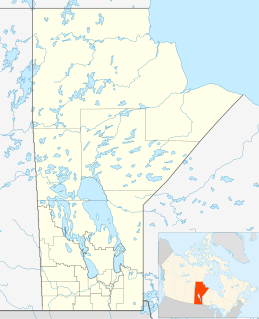
Wupperthal is a small town in the Cederberg mountains in the Western Cape province of South Africa. It was founded in 1830 by two German missionaries of the Rhenish Missionary Society, Theobald von Wurmb and Johann Gottlieb Leipoldt, grandfather of C. Louis Leipoldt – some 100 years before the city of Wuppertal was formally established in Germany. In 1965, after the Rhenish Mission had gradually scaled down their activities in Southern Africa over a period of 40 years, a decision was taken that Wupperthal in future should become part of the Moravian Church, which by that stage had already made the transition from a mission to an autonomous church in South Africa. The town remains a Moravian mission station to this day.

The Cederberg mountains are located near Clanwilliam, approximately 300 km north of Cape Town, South Africa at about 32°30′S19°0′E. The mountain range is named after the endangered Clanwilliam cedar, which is a tree endemic to the area. The mountains are noted for dramatic rock formations and San rock art. The Cederberg Wilderness Area is administered by CapeNature.

Kayes is a city in western Mali on the Sénégal River, with a population of 127,368 at the 2009 census. Kayes is the capital of the administrative region of the same name. The name "Kayes" comes from the Soninké word "karré", which describes a low humid place that floods in rainy season. The city is located 420 kilometres (260 mi) northwest of the capital Bamako.

Cederberg Local Municipality is a local municipality which governs an area of the Western Cape province of South Africa stretching from the Cederberg mountains through the middle valley of the Olifants River to the Atlantic coast. It includes the towns of Clanwilliam, Citrusdal and Lamberts Bay, and the surrounding villages and farms. As of 2011 it had a population of 49,768. It is located within the West Coast District Municipality and has municipality code WC012.

The Olifants River is a river in the northwestern area of the Western Cape Province of South Africa. The upper and main catchment area of the Olifants river is around Ceres and the Cederberg mountains. The Clanwilliam and Bulshoek dams are located on the river and provide water for the towns and farms along the watercourse. The river is approximately 285 km long with a catchment area of 46,220 km2 and flows into the Atlantic Ocean at Papendorp, 250 km north of Cape Town.
Clanwilliam, Manitoba is a community in the Rural Municipality of Minto-Odanah in Manitoba, Canada. The Municipality of Clanwilliam – Erickson immediately north takes its name from the community.

Christian Frederik Louis Leipoldt, usually referred to as C. Louis Leipoldt, was a South African poet, dramatist, medical doctor, reporter and food expert. Together with Jan F. E. Celliers and J. D. du Toit, he was one of the leading figures in the poetry of the Second Afrikaans Movement. Apart from poetry, Leipoldt wrote novels, plays, stories, children's books, cookbooks and a travel diary. He is numbered amongst the greatest of the Afrikaner poets and he was described by D. J. Opperman, himself a noted South African poet, as "our most versatile artist".

Clanwilliam is a town in the Olifants River valley in the Western Cape, South Africa, about 200 kilometres (120 mi) north of Cape Town. It is located in, and the seat of, the Cederberg Local Municipality. As of 2011 Clanwilliam had a population of 7,674.

Harry Bolus was a South African botanist, botanical artist, businessman and philanthropist. He advanced botany in South Africa by establishing bursaries, founding the Bolus Herbarium and bequeathing his library and a large part of his fortune to the South African College. Active in scientific circles, he was a Fellow of the Linnean Society, member and president of the South African Philosophical Society, the SA Medal and Grant by the SA Association for the Advancement of Science and an honorary D.Sc. from the University of the Cape of Good Hope. Volume 121 of Curtis's Botanical Magazine was dedicated to him. He is commemorated in five genera: Bolusia Benth., Bolusafra Kuntze, Neobolusia Schltr., Bolusanthus Harms and Bolusiella Schltr., as well as numerous specific names.

General John Francis Cradock, 1st Baron Howden was a British peer, politician and soldier.

Bobotie is a well-known South African dish consisting of spiced minced meat baked with an egg-based topping.

Widdringtonia wallichii, Clanwilliam cedar or Clanwilliam cypress, previously Widdringtonia cedarbergensis is a species of Widdringtonia native to South Africa, where it is endemic to the Cederberg Mountains northeast of Cape Town in Western Cape Province. It is threatened by habitat loss and protected in South Africa under the National Forest Act of 1998.

Riebeek-Kasteel is one of the oldest towns in South Africa, situated at 80 km north-east of Cape Town in The Riebeek Valley together with its sister town Riebeek West. During 1661 Commander Jan van Riebeeck initiated an inland discovery expedition under the leadership of Pieter Cruythoff. They set off in the direction of Paardeberg and on 3 February 1661 they ascended a lonely mountain and came upon the fertile vista of the Riebeek Valley.
The Rural Municipality of Clanwilliam is a former rural municipality (RM) in the Canadian province of Manitoba. It was originally incorporated as a rural municipality on December 22, 1883. It ceased on January 1, 2015 as a result of its provincially mandated amalgamation with the Town of Erickson to form the Municipality of Clanwilliam – Erickson.
John Christoffel Kannemeyer, better known as J. C. Kannemeyer was an authority on Afrikaans literature and a well-known biographer of Afrikaans writers, and published numerous books on the history of Afrikaans literature.

Graafwater is a town in the Sandveld in the Western Cape province of South Africa situated 300 km from Cape Town, about halfway between Clanwilliam and Lamberts Bay. Graafwater is the Afrikaans term for "digging for water" referring to the Afrikaans farming culture found in South Africa at the time of establishment. It is located in the Cederberg Municipality.

A tameletjie is a homemade toffee confection which features prominently within the Afrikaner and Malay cultures of South Africa. The sweet is made from sugar and water which has been boiled until caramelized and then rested to cool to form a hard sweet. There are many variations to the sweet attained by adding almonds, pine nuts or coconut to the recipe.

The Municipality of Clanwilliam – Erickson is a rural municipality (RM) in the Canadian province of Manitoba.

Felicia josephinae is a roughly hairy annual herbaceous plant of 15–20 cm (6–8 in) high, that is assigned to the daisy family. It branches near its base, and has few leaves along its stems. The lower leaves are set oppositely, inverted lance-shaped, relatively large at 3–7 cm long and ⅔–1¼ cm wide, and soon withering, while the higher ones are smaller and relatively narrower. In the axils of the leaves grow flower heads of 7–8 mm wide on stalks of up to 5 cm (2 in) long, topped with an involucre of about 5 mm (0.2 in) high and 4 mm (0.16 in) wide, consisting of eleven to thirteen bracts in two rows with bristles near the tip, eight to nine white or cream-coloured ligulate florets surrounding fourteen or fifteen deep purple disc florets. Flowers can be found in September and October. The species is an endemic species that can only be found in a small area along the west coast of the Western Cape province of South Africa.
Pakhuis Pass is a mountain pass on the R364 in the northern Cederberg in South Africa. The pass connects Clanwilliam to Calvinia. A turnoff from the pass heads southeast to the Biedouw Valley and Wupperthal. The pass is 25 km long, reaches an altitude of 905 m at a gradient of 1:9.



















